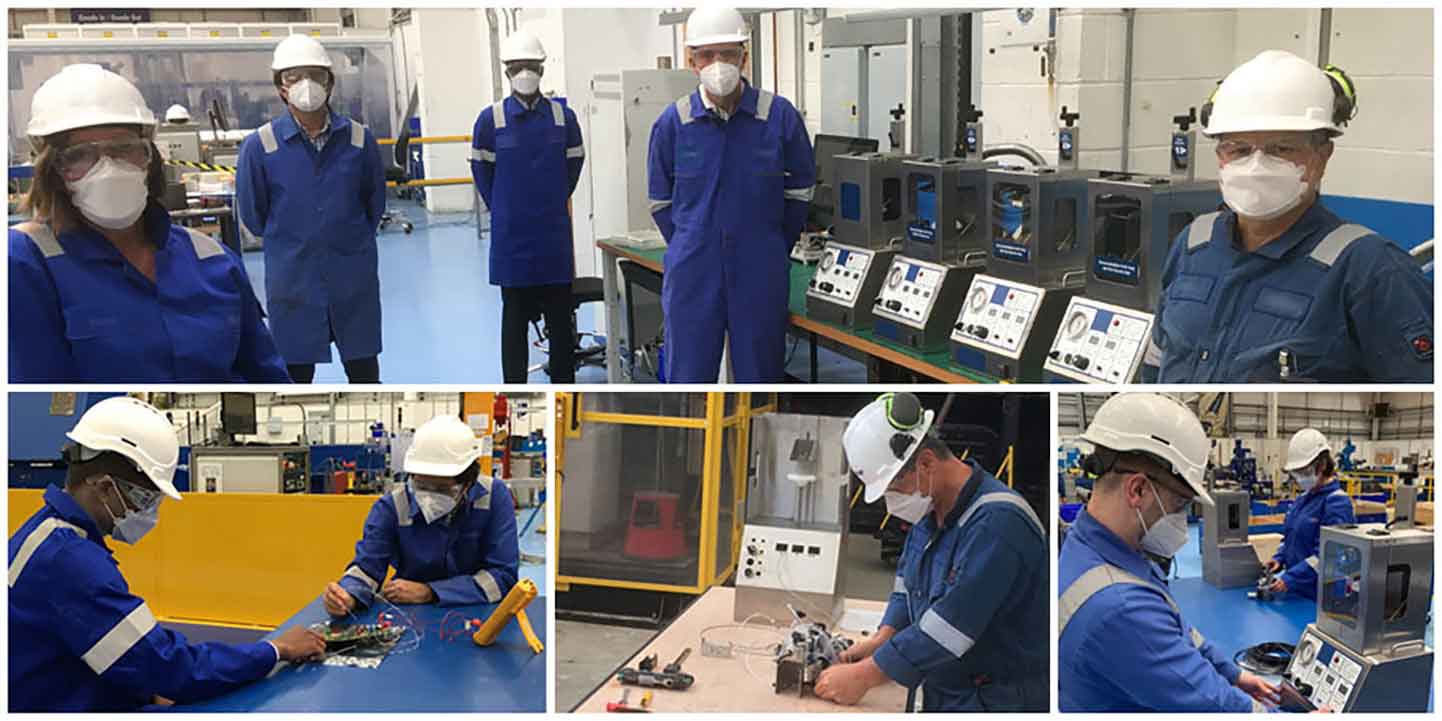Schlumberger recently issued the following announcement.
Schlumberger engineers at the Schlumberger Cambridge Research Centre (SCR) and Stonehouse Technology Centre (SHTC), UK, are collaborating with two UK companies to take a ventilator prototype into production to support healthcare systems in developing nations during the COVID-19 pandemic.
The simple design uses compressed medical-grade air to drive the pneumatics and analog electronics for reliability. To enhance the suitability for use in developing countries, a design without relying on software or a microcontroller combined with a basic 5-volt phone charger power supply and battery backup system improves operational reliability.
Another important feature of the design is the availability of multiple sources for its mechanical and electronic parts. This makes it relatively inexpensive – and quick – to produce compared with alternative ventilator designs.
Systems with alarms and displays ensure that patient safety is uncompromised in this robust, affordable and easy-to-use machine.
Ashley Johnson, Head of Well Construction Science at SCR, explains, “We are collaborating with two experienced companies to be able to deliver these ventilators quickly, and in a manner that’s scalable to ensure that we can help to meet the potential demand for life-saving equipment even in countries where healthcare systems are not comprehensive, or where infrastructure might pose additional challenges to running highly sophisticated medical equipment on an uninterrupted basis.”
Schlumberger brings its engineering expertise in pneumatics, hydraulics, electronics and manufacturing, as well as an associated global supply chain access.
“In combination with our key partners who provide expertise in automation and design of medical-grade equipment, notes Johnson, “we believe we can deliver a vital supply of lifesaving equipment to respond to the COVID-19 pandemic in countries where cost and infrastructure might be prohibitive in procuring and using other types of ventilators.”
Currently in the feedback-gathering stage, trials so far have been received very positively. Some of the benefits clinicians have singled out are low use of oxygen—which is critical when many hospitals struggle to get flows of oxygen to the wards—and the relatively simple and intuitive operation of the system, which means less training will be required before the ventilators can be put to work.
The team at SHTC built an initial ten ventilators in early May. Actual use and deployment of the ventilators will be subject to local qualification and regulation, neither of which has yet occurred. Watch this space for updates.
Learn more about how Schlumberger locations worldwide are supporting their communities in response to COVID-19 here.
Original source can be found here.
Source: Schlumberger

